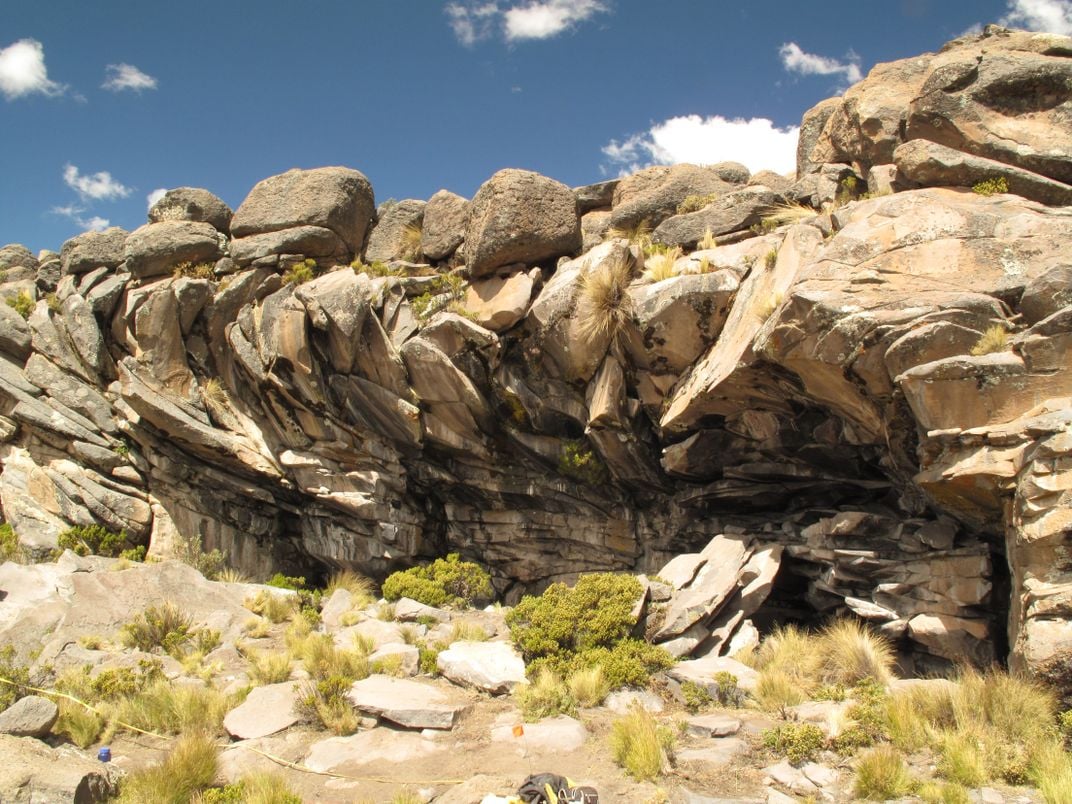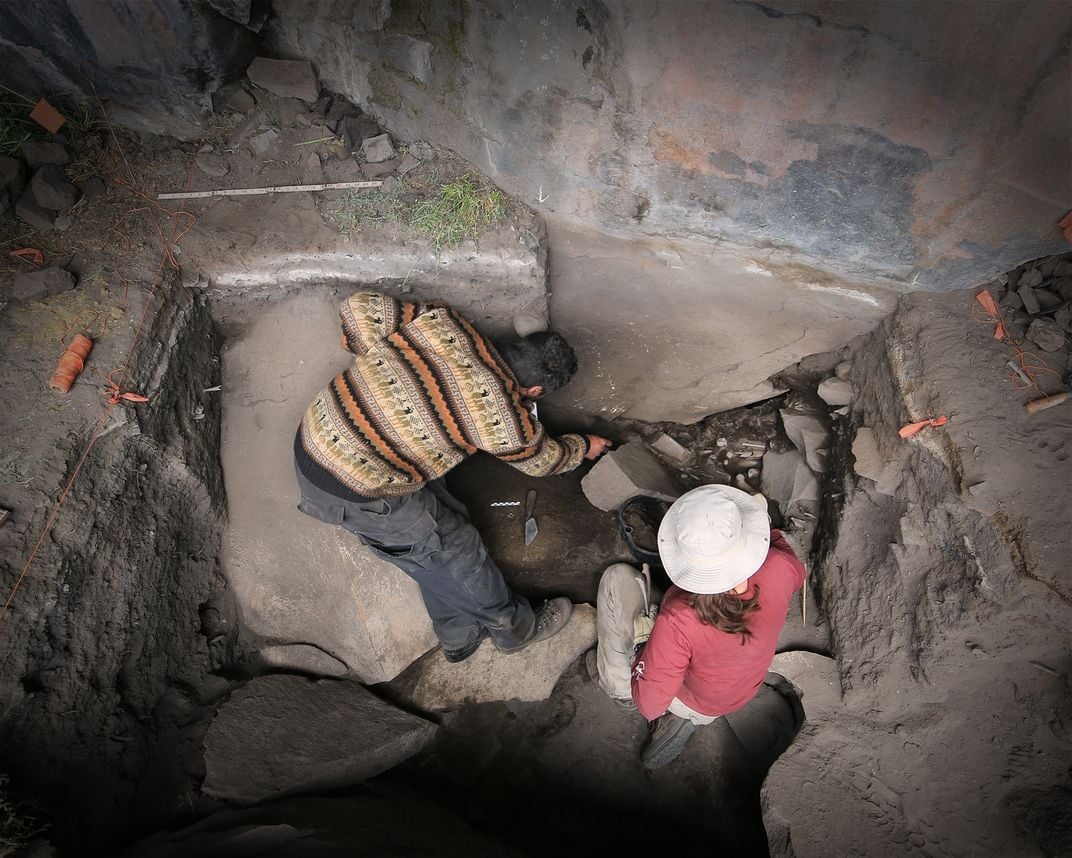Stone Age Shelter in Peru is the Oldest, Highest Human Settlement
Researchers found campfires and rock art at nearly 14,700 feet, suggesting ancient people lived high just 2,000 years after they reached South America
/https://tf-cmsv2-smithsonianmag-media.s3.amazonaws.com/filer/76/39/7639c20c-ff34-4c37-953e-449131a076dc/rademaker6hr.jpg)
High in the southern Peruvian Andes, a rock overhang creates shelter. The soot-blackened ceilings and the walls adorned with rock art betray the influence of humans. And, when researchers began digging into this site, they found that humans had used the outcrop’s two rocky alcoves for thousands of years—that, in fact, this was the highest-altitude Stone Age site in the world.
A nearby vein of obsidian drew ancient people to hike up to the arid Pucuncho Basin. At more than 14,300 feet above sea level, the basin would have offered them a landscape with little fuel for fires, cold temperatures that required them to eat many more calories to survive and less than 60 percent of the oxygen at sea level, the researchers report in Science.

The shelter holds ceramics, bone beads, quartz crystals, bones from hunted vicuña and other camelids, and the charred remains of woody shrubs used for fire. Not far from the rock shelter and close to the obsidian, the researchers found an open-air work shop with about 260 tools—including hand axes and spear points—some that might be 12,800 years old.
"We don't know if people were living there year round, but we strongly suspect they were not just going there to hunt for a few days, then leaving," archaeologist Sonia Zarrillo of the University of Calgary, one of the researchers, told Popular Archaeology. "There were possibly even families living at these sites, because we've found evidence of a whole range of activities."
Lead researcher Kurt Rademaker, who was a University of Maine visiting professor at the time of the study, has been searching for this site since the 1990s. It started at the excavation of 13,000-year-old fishing site on Peru’s coast, where he found an obsidian tool miles and miles away from the nearest volcanic rock. "This obsidian told us early on, Paleoindians must have gone to the highlands," Rademaker told Livescience.com. Searching the Pucuncho Basin led his team to the newly discovered sites.
